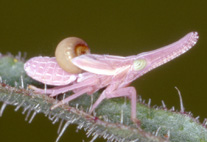Abstract
We describe two new species of puddle frogs, genus Phrynobatrachus, from the south-western Republic of the Congo. One of them, P. horsti sp. nov., occurs also in neighbouring Gabon and is morphologically most similar to the Cameroonian P. ruthbeateae. It differs from the latter species by smaller males with longer thighs and shanks. The new species comprises various colour morphs but always has less conspicuous black borders between flanks and belly than P. ruthbeateae. The distinct and large black axillary blotch of P. ruthbeateae is either much smaller in P. horsti sp. nov., or broken into numerous irregularly shaped smaller dots. Similarly, a black transversal line at the anterior ventral border of thighs and the black face mask is less distinct and irregularly delimitated in P. horsti sp. nov. when compared to P. ruthbeateae. The mean genetic difference in the sampled region of the 16S rRNA gene between P. horsti sp. nov. and 40 other western African congeners range from 3.66-18.10%. The second new species, P. mayokoensis sp. nov., differs from all other known congeners by the combination of a compact and warty body, the absence of a spiny eyelid tubercle and pedal webbing, a conspicuous black triangle on throat and anterior part of the belly, and a distinct large red blotch on the anterior-proximal surface of the thighs. It exhibited a mean genetic difference in the 16S rRNA to 40 other western African congeners ranging from 1.34-16.98%. The genetically most similar sequence stems from a GenBank entry of a Gabonese frog, determined as P. ogoensis. A comparison of the new species with P. ogoensis syntypes confirmed their specific distinctiveness, most convincingly underlined by the absence of pedal webbing in the new species and the pronounced pedal webbing in P. ogoensis. The GenBank entry thus most likely is based on a misidentification and P. mayokoensis sp. nov. may also occur in neighbouring Gabon. The discovery of the two new frog species is further evidence of the huge gap in our knowledge concerning the species richness in the Guineo-Congolian rainforests.

